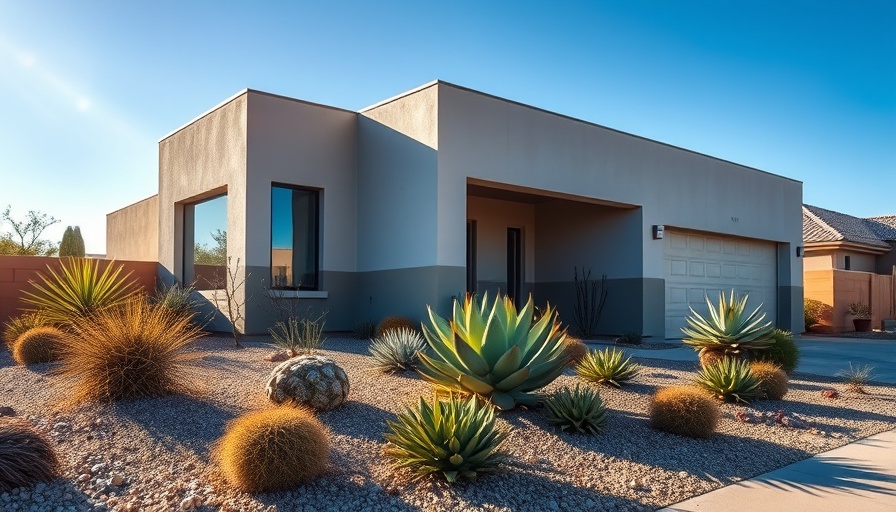
Understanding Tariffs: A Hidden Cost in Home Renovations
As homeowners dive into their renovation projects, the financial landscape is often more complex than it appears. One significant yet often overlooked factor is the impact of tariffs on imported building materials. This extra cost, applied by the government on goods brought into the U.S., can profoundly alter your renovation budget. With an estimated $14 billion in imported goods used for residential construction, tariffs are a hidden financial weight that can skew your budget beyond your expectations.
The Rising Costs of Renovation
The National Association of Home Builders (NAHB) highlights that the rise in building material costs has surged about 34% since December 2020, surpassing general inflation rates. This spike showcases the broader economic implications that homeowners face in renovation plans. On average, builders report that tariffs add approximately $10,900 to the cost of constructing a new home. For renovation projects, while this figure can vary greatly, the influence of tariffs is undeniable.
Tariffs and the Price of Lumber
Lumber, a core material in any renovation, exemplifies the direct effects of tariffs. With Canada being a principal supplier of softwood lumber, tariffs on Canadian goods can mean severe cost increases for crucial framing and decking materials. Presently, there’s concern that tariffs could increase more than double to 34.5% later this year. This potential hike threatens to expand the overall cost of projects that rely heavily on wood materials.
Wider Impact on Home Renovations
The implications of tariffs extend beyond just lumber. Various essential materials utilized in home renovations experience similar price pressures, causing widened financial repercussions for homeowners:
- Steel and Aluminum: These materials are paramount for structural integrity, used across various fixtures and appliances.
- Kitchen Appliances: From ovens to refrigerators, many of which contain imported components, tariffs can add substantial costs.
- Flooring and Lighting Solutions: As homeowners look to upgrade their interiors, the cost of tiles, lighting fixtures, and other essentials is influenced by international trade policies.
The Bigger Picture: The Future of Home Renovations
As we consider the future, the ongoing tariff situation suggests some powerful trends affecting home renovations:
- Rising DIY Culture: With costs climbing, more homeowners may resort to do-it-yourself renovations, fostering creativity and resourcefulness in home improvements.
- Local Sourcing Gains Popularity: Homeowners might increasingly prefer locally sourced materials to avoid tariffs, benefiting local economies and reducing environmental footprints.
- Emergence of Smart Solutions: Smart home technologies are on the rise, increasingly being integrated into renovations as homeowners seek to maximize their investments amid rising costs.
How Homeowners Can Navigate Cost Pressures
So how can renovations proceed without derailing budgets? Here are some actionable insights for homeowners:
- Get Quotes Early: Engaging multiple home contractors to get estimates can help shield against unexpected hikes.
- Stay Informed: Understanding current trade policies can help anticipate changes in prices and allow for better planning.
- Consider Alternatives: Exploring alternative materials or even energy-efficient upgrades can provide cost savings in the long run.
A Call for Awareness: Your Renovation Matters
As homeowners navigate the complexities of renovations, it's crucial to be aware of all influencing factors, including tariffs. Your choices not only shape your home but also impact the larger economic environment. For those looking to start or continue home renovations, understanding these costs can empower you to make informed decisions.
Don't let hidden costs catch you off guard—subscribe to our weekly newsletter for home renovation stories and expert advice that will keep you ahead of the curve!
 Add Row
Add Row  Add
Add 




 Add Row
Add Row  Add
Add 

Write A Comment